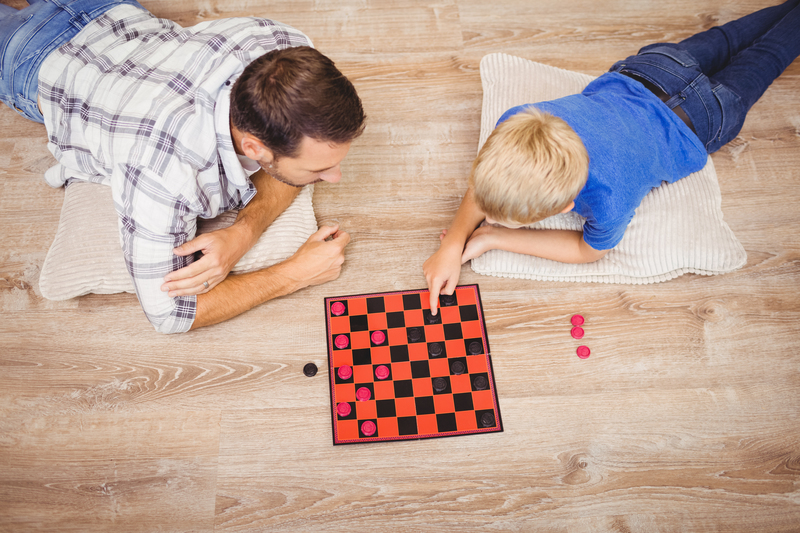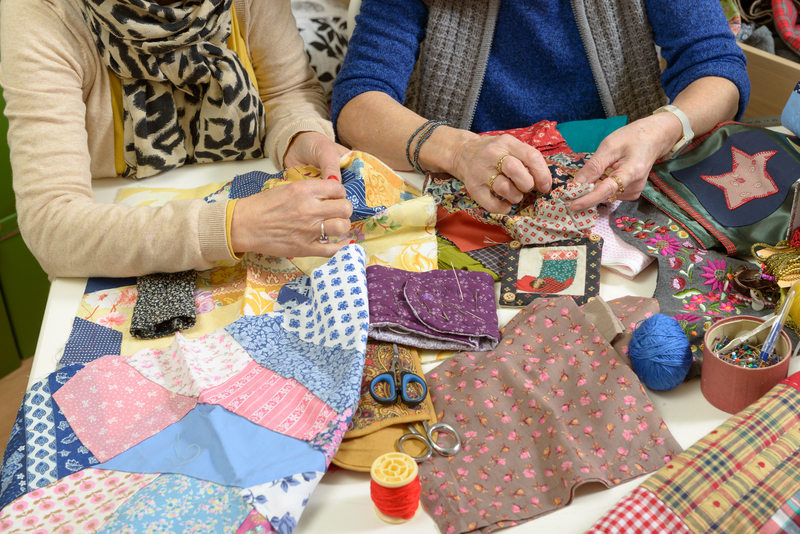Environmental Impact of Throwing Away Old Cookware
The kitchen is often considered the heart of the home, and cookware plays a pivotal role in family meals and cherished traditions. However, every pan, pot, or utensil has its own lifecycle -- and eventually, all will face the moment when they're no longer usable. But what happens when we simply toss old frying pans, pots, and baking trays into the trash? The environmental impact of discarding cookware can be surprisingly significant, with wide-reaching consequences for landfills, natural resources, and even public health.

Why Does Old Cookware Become Waste?
Cookware is made to last, but over time, even the best-made pieces degrade. Nonstick coatings may scratch or peel, ceramic and glass can crack, while metals can corrode or warp. Consumer trends and upgrades also play a role: the rise of new technologies and aesthetics, as well as changes in cooking habits, drive people to replace kitchen equipment more frequently than ever before. The end result? Millions of pieces of cookware are discarded yearly, adding to our planet's mounting waste problem.
Common Materials in Discarded Cookware
- Aluminum: Used in pans and pots for its lightness and heat distribution, but can be hard to recycle if coated.
- Stainless Steel: Durable and corrosion-resistant, but not always accepted by curbside recycling programs.
- Cast Iron: Heavy and long-lasting, yet often ends up in the trash if rusted or damaged.
- Nonstick Surfaces: Includes Teflon and ceramic coatings, which degrade and enter waste streams.
- Glass and Ceramics: Prone to chipping or cracking, notoriously difficult to recycle.
The Waste Stream: What Happens When You Throw Away Old Pots and Pans?
The journey of cookware doesn't end at the garbage bin. Most cookware ends up in landfills, and the environmental consequences of cookware disposal begin to unfold:
1. Landfill Accumulation
Landfills are designed to store waste safely, but the reality is that many materials -- especially metals and ceramics-- do not decompose. Old metal cookware can take hundreds of years to break down (if at all), occupying valuable landfill space and pushing us closer to landfill capacity limits. Even throwing away nonstick pans means that chemical coatings can leach into soil and groundwater.
2. Leaching of Harmful Substances
- Nonstick Cookware: Teflon coatings (PTFE), when degraded, can release perfluorinated compounds (such as PFOA, PFOS), some of which are persistent environmental pollutants linked to cancers and hormone disruption.
- Glass and Ceramic Glazes: Older ceramic cookware, especially imported or antique pieces, may contain traces of lead or cadmium that leach out over time.
As these materials sit in landfills, rain and environmental conditions can further encourage the release of toxins into water systems, contributing to broader environmental and health hazards.
3. Loss of Recyclable Resources
When cookware is thrown away rather than recycled, valuable metals like aluminum and steel are lost forever. Mining and processing new raw materials uses far more energy and produces more greenhouse gases compared to recycling existing metal. The environmental impact of discarding metal cookware is thus twofold: increased landfill content and needless depletion of natural resources.
Hidden Impacts: Microplastics and Chemical Pollution
The environmental impact of disposing of cookware doesn't stop at the visible. As nonstick coatings, plastics, or polymer-based handles break down, they can shed microplastics and other chemicals into the surrounding soil and water.
- Microplastics: Tiny plastic fragments are now present in virtually every corner of the world, including oceans, drinking water, and animal life, posing long-term ecological and health risks.
- Endocrine Disruptors: Some cookware coatings can break down into chemicals that interfere with animal and human hormone systems.
Persistent Organic Pollutants
Beyond the visible trash, harmful chemicals from cookware like PFAS (perfluoroalkyl substances) can persist in nature for decades, circulating through air, water, and living organisms. The environmental effect of throwing away nonstick cookware is especially concerning due to these toxic, persistent compounds.
Environmental Cost of Manufacturing New Cookware
Every pot or pan you toss away likely gets replaced. The environmental impact of discarding kitchenware isn't just about the waste created -- it's also about the new resources demanded for manufacturing replacements. The production of cookware involves:
- Energy-Intensive Mining: Extracting metals such as iron, aluminum, and copper from the earth is energy-intensive and produces a high carbon footprint.
- Heavy Water Usage: Manufacturing processes--especially in aluminum production--require large amounts of water and chemicals.
- Chemical Pollution: Smelting and coating processes can release pollutants into the air, soil, and water.
- Greenhouse Gas Emissions: The entire lifecycle, from mining to transportation to sale, contributes to climate change.
When consumers toss old cookware without recycling, they contribute not just to waste problems but also to the unsustainable consumption of resources needed to make products anew.
Are There Eco-Friendly Ways to Dispose of Old Cookware?
While the environmental impact of discarding cookware can be troubling, there are more sustainable options that can lighten the footprint:
1. Reuse and Repurpose
- Art and Craft Projects: Old pans and pots can be transformed into planters, art, utensil holders, or vintage decor.
- Charity Donation: Some local organizations accept gently used cookware for redistribution to families in need or community kitchens.
- Tool Sheds: Pots can store garden tools or become mixing containers for paint and other projects.
2. Recycling Cookware Responsibly
Many metal recycling programs accept steel and aluminum cookware, though it may require a drop-off at a dedicated scrap metal facility. Here's what to keep in mind:
- Remove Non-Metal Parts: Take off plastic handles or rubber parts, as these can contaminate the recycling process.
- Contact Local Facilities: Not all municipal recycling programs accept cookware; call ahead to confirm.
- Check for Charities or Secondhand Stores: These groups may accept items unsuitable for curbside recycling.
3. Avoid the Trash Can
The least environmentally damaging option is always to extend the life of your cookware. If pots and pans are still functional but scratched, consider using them for non-food purposes or passing them to someone in need.
What About Specialty Cookware?
Specialty items like cast iron, copper, ceramic bakeware, or vintage pieces may require unique handling:
- Cast Iron: Even severely rusted pieces can be restored with sanding and seasoning. Many collectors and enthusiasts seek out old cast iron for restoration.
- Copper: Often valuable and recyclable, copper cookware can be sold or repurposed.
- Nonstick Coatings: Most curbside recycling facilities won't accept these due to the chemical coatings. Specialized e-waste or hazardous waste programs may offer drop-off days for such items.
Government and Industry Initiatives
In light of the growing concern over the environmental ramifications of waste, government and industry initiatives are emerging to tackle the waste generated from old cookware:
- Extended Producer Responsibility (EPR): Some regions are beginning to require manufacturers to facilitate the recycling or safe disposal of their products, including cookware.
- Eco-Design: Shift toward designing kitchenware that is longer-lasting, easier to repair, and easier to recycle at the end of its life.
- Consumer Education: Efforts to increase recycling rates and reduce unnecessary upgrades through education on the environmental impact of food and cookware waste.

Practical Steps for Eco-Friendly Cookware Disposal
For anyone wanting to minimize the environmental impact of old cooking utensils, a few simple steps can make a difference:
- Research Your Community's Recycling Options: Look up municipal websites or call your local waste authority to see where cookware can be recycled or donated.
- Choose Repair Over Replacement: If handles are loose or surfaces are dull, consider repairs before throwing items away.
- Swap and Share: Organize a kitchenware swap event in your community or among friends to keep usable items out of the trash.
- Buy Quality, Not Quantity: Invest in durable cookware made from materials like stainless steel or cast iron, which can be repaired, restored, or recycled more easily.
Conclusion: Toward a Greener Kitchen
Every piece of cookware has a footprint that extends far beyond our kitchens. The ecological consequences of discarding cookware irresponsibly -- from growing landfills, resource waste, to toxic chemical pollution -- are increasingly impossible to ignore as we strive for a sustainable future. The good news is that with awareness, small shifts in our consumer habits, and responsible disposal, we can all play a part in reducing the environmental impact of cookware disposal.
Next time you consider tossing out an old pot or pan, think twice. Your choice can help preserve natural resources, keep harmful chemicals out of land and water, and move us closer to a future where the heart of the home beats a little lighter on the Earth.